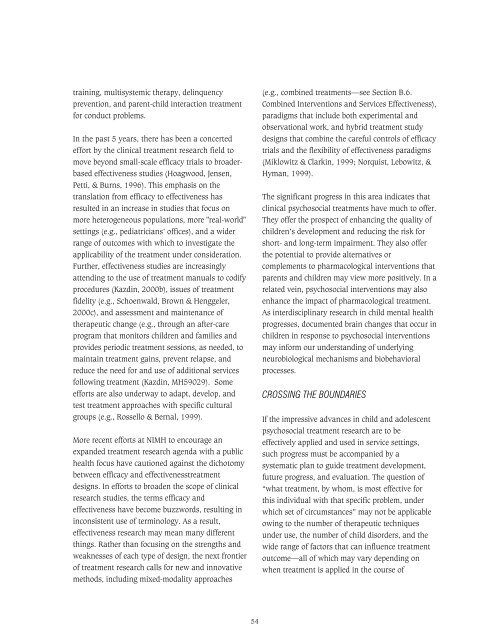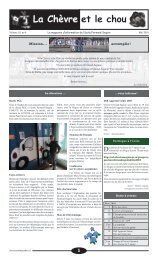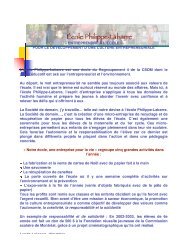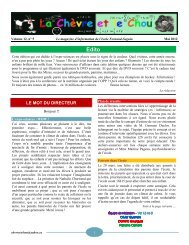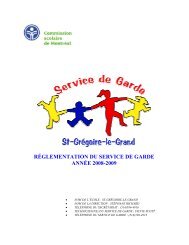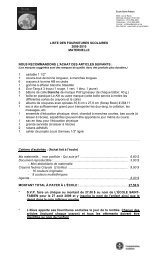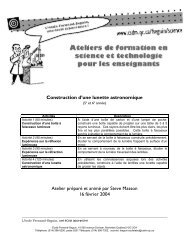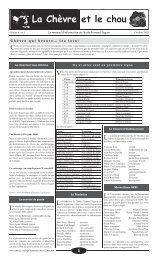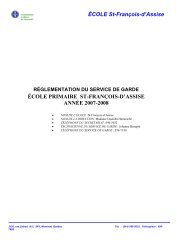Research on Child and Adolescent Mental Health
Research on Child and Adolescent Mental Health
Research on Child and Adolescent Mental Health
Create successful ePaper yourself
Turn your PDF publications into a flip-book with our unique Google optimized e-Paper software.
training, multisystemic therapy, delinquency<br />
preventi<strong>on</strong>, <strong>and</strong> parent-child interacti<strong>on</strong> treatment<br />
for c<strong>on</strong>duct problems.<br />
In the past 5 years, there has been a c<strong>on</strong>certed<br />
effort by the clinical treatment research field to<br />
move bey<strong>on</strong>d small-scale efficacy trials to broaderbased<br />
effectiveness studies (Hoagwood, Jensen,<br />
Petti, & Burns, 1996). This emphasis <strong>on</strong> the<br />
translati<strong>on</strong> from efficacy to effectiveness has<br />
resulted in an increase in studies that focus <strong>on</strong><br />
more heterogeneous populati<strong>on</strong>s, more "real-world"<br />
settings (e.g., pediatricians’ offices), <strong>and</strong> a wider<br />
range of outcomes with which to investigate the<br />
applicability of the treatment under c<strong>on</strong>siderati<strong>on</strong>.<br />
Further, effectiveness studies are increasingly<br />
attending to the use of treatment manuals to codify<br />
procedures (Kazdin, 2000b), issues of treatment<br />
fidelity (e.g., Schoenwald, Brown & Henggeler,<br />
2000c), <strong>and</strong> assessment <strong>and</strong> maintenance of<br />
therapeutic change (e.g., through an after-care<br />
program that m<strong>on</strong>itors children <strong>and</strong> families <strong>and</strong><br />
provides periodic treatment sessi<strong>on</strong>s, as needed, to<br />
maintain treatment gains, prevent relapse, <strong>and</strong><br />
reduce the need for <strong>and</strong> use of additi<strong>on</strong>al services<br />
following treatment (Kazdin, MH59029). Some<br />
efforts are also underway to adapt, develop, <strong>and</strong><br />
test treatment approaches with specific cultural<br />
groups (e.g., Rossello & Bernal, 1999).<br />
More recent efforts at NIMH to encourage an<br />
exp<strong>and</strong>ed treatment research agenda with a public<br />
health focus have cauti<strong>on</strong>ed against the dichotomy<br />
between efficacy <strong>and</strong> effectivenesstreatment<br />
designs. In efforts to broaden the scope of clinical<br />
research studies, the terms efficacy <strong>and</strong><br />
effectiveness have become buzzwords, resulting in<br />
inc<strong>on</strong>sistent use of terminology. As a result,<br />
effectiveness research may mean many different<br />
things. Rather than focusing <strong>on</strong> the strengths <strong>and</strong><br />
weaknesses of each type of design, the next fr<strong>on</strong>tier<br />
of treatment research calls for new <strong>and</strong> innovative<br />
methods, including mixed-modality approaches<br />
(e.g., combined treatments—see Secti<strong>on</strong> B.6.<br />
Combined Interventi<strong>on</strong>s <strong>and</strong> Services Effectiveness),<br />
paradigms that include both experimental <strong>and</strong><br />
observati<strong>on</strong>al work, <strong>and</strong> hybrid treatment study<br />
designs that combine the careful c<strong>on</strong>trols of efficacy<br />
trials <strong>and</strong> the flexibility of effectiveness paradigms<br />
(Miklowitz & Clarkin, 1999; Norquist, Lebowitz, &<br />
Hyman, 1999).<br />
The significant progress in this area indicates that<br />
clinical psychosocial treatments have much to offer.<br />
They offer the prospect of enhancing the quality of<br />
children’s development <strong>and</strong> reducing the risk for<br />
short- <strong>and</strong> l<strong>on</strong>g-term impairment. They also offer<br />
the potential to provide alternatives or<br />
complements to pharmacological interventi<strong>on</strong>s that<br />
parents <strong>and</strong> children may view more positively. In a<br />
related vein, psychosocial interventi<strong>on</strong>s may also<br />
enhance the impact of pharmacological treatment.<br />
As interdisciplinary research in child mental health<br />
progresses, documented brain changes that occur in<br />
children in resp<strong>on</strong>se to psychosocial interventi<strong>on</strong>s<br />
may inform our underst<strong>and</strong>ing of underlying<br />
neurobiological mechanisms <strong>and</strong> biobehavioral<br />
processes.<br />
CROSSING THE BOUNDARIES<br />
If the impressive advances in child <strong>and</strong> adolescent<br />
psychosocial treatment research are to be<br />
effectively applied <strong>and</strong> used in service settings,<br />
such progress must be accompanied by a<br />
systematic plan to guide treatment development,<br />
future progress, <strong>and</strong> evaluati<strong>on</strong>. The questi<strong>on</strong> of<br />
“what treatment, by whom, is most effective for<br />
this individual with that specific problem, under<br />
which set of circumstances” may not be applicable<br />
owing to the number of therapeutic techniques<br />
under use, the number of child disorders, <strong>and</strong> the<br />
wide range of factors that can influence treatment<br />
outcome—all of which may vary depending <strong>on</strong><br />
when treatment is applied in the course of<br />
54


